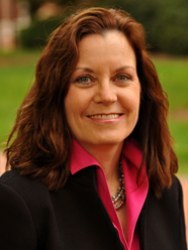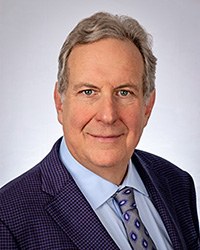In Part Two of the conversation featuring Dr. Joanne Jordan and Dr. Ron Falk, they discuss the comprehensive nature of the Thurston Arthritis Research Center, its work in understanding Alpha-Gal, and community involvement with the Osteoarthritis Action Alliance and “Walk with a Doc.”


– Dr. Joanne Jordan
Part Two: Comprehensive Care, Alpha-Gal, and Community Work
Dr. Falk: Let’s talk about the comprehensive service that the Division of Allergy, Rheumatology, and Immunology provides. It’s almost a mouthful to try to say all those words.
Dr. Jordan: It is, isn’t it?
Dr: Falk: Help me understand what it means then to have an organization that thinks about not only about rheumatological conditions but also about the allergy and immunology components.
Dr. Jordan: That’s a question that we get a lot. What does allergy have to do with rheumatoid arthritis, or any of these other conditions? We are in a very small group of rheumatology programs that are comprehensive as we are. It is not common to have allergy and immunology in the same division with the rheumatologists. It gives us a completely broad, one end to the other, look at the immune system. We have physicians and trainees who know not just about the rheumatology side, but also about the allergy and immunology side. The tie really is the immune system. Different parts of the immune system are involved in different types of these conditions.
One way to perhaps look at this, is we take care of people with immunodeficiencies. For whatever reason, their body does not produce antibodies that we need to fight infections and other types of invasions. Those people frequently get infections. The thing that we don’t understand is, maybe they don’t have all those antibodies and those antibodies cause autoimmune disease like rheumatoid arthritis and lupus, how is it that people with immunodeficiencies get these other conditions? A wonderful mystery. So when you’re able to follow those people and realize that people with immunodeficiencies have autoimmune conditions it really turns everything that we think about upside down. You have to learn about these conditions and think about them in a unified, holistic way.
Dr. Falk: There is an interesting, and for somebody who’s a meat-lover, a difficult to even comprehend, allergy, of one who wants to eat meat and now can’t because of a meat allergy. Why?
Dr. Jordan: The alpha gal, I’m very proud to say, we are one of the main places on the planet that is looking at this condition in a holistic way. In the laboratory with recruitment with several of our new investigators, in our clinic, and now in the community we’ll be adding a component to look at how common this allergy is, in our Johnston County Osteoarthritis project.
Dr. Falk: Why does somebody get an allergy to meat?
Dr. Jordan: This is very unusual, and it’s only now being understood a little bit. There are some thoughts that there may be a connection to tick bites, but that’s not hard and fast. That’s why we really feel like we have to not just look at it in the laboratory, and not just study the people who come to us with this condition, but also to go out into the community and find out how common this is or isn’t, and then, are there things in that environment that we can identify that people may have been exposed to that have caused this. It almost seems like it’s getting to be an epidemic. It’s certainly concentrated in the south, but it is also being seen in other places around the United States and around the world.
Dr. Falk: What are they allergic to? Is it something in meat?
Dr. Jordan: Most allergies happen immediately. You eat peanut butter, if you’re peanut-allergic and you get an immediate reaction. You may have an allergy to a bee sting and you get an immediate reaction. The alpha gal is not a reaction to a protein, it’s a reaction to a carbohydrate, it appears. That is not usually what we think of in our typical allergies. What is really unusual about it, is the reaction is not immediate like these others. People may have a dinner with meat, and they may go to bed, and wake up in the middle of the night with hives all over their body. It takes a long time, one because not that many people know about it in the public, but also not that many physicians know about it. It goes around as one of these mysterious types of things.
Our clinicians are well-versed in this condition and able to diagnose it and treat it effectively.
Dr. Falk: Once somebody has this allergy, does that mean if you’re a typical 25-year-old American male that you don’t get to eat meat ever again?
Dr. Jordan: For the most part, the most reliable way to avoid the reaction is to avoid the meat at this point.
Dr. Falk: What a sad commentary to all those meat-lovers out there, but all the vegetarians in our community are probably saying I told you so!
Dr. Falk: So Dr. Jordan, let me come back to the patient perspective. If you have a patient with osteoarthritis who is participating in a study, help me understand what that patient should expect.
Dr. Jordan: It depends on where and what type of study. If they happen to be seeing us in Chapel Hill, they might be participating in some of the medications we might be testing or evaluating in osteoarthritis. If they’re participating in our community research, that may look significantly different. People who come into the Johnston County Osteoarthritis Project, know that they’re really forming a relationship with us that will be over the long term. They get to understand and think about themselves as active participants in trying to find a cure for this condition, in trying to find out what works to take care of it, prevent it from getting worse, prevent people from getting in the first place. When participants come in, they answer lots of questions, they give a blood sample, they have x-rays and various ways of testing and looking at their function and so on, but they also know that they’re really part of this ongoing process.
We go, and we go back and say, “Hey did you know that we were talking about this study in Vienna? And Sydney?” They’re just so excited to know that they’re actually part of something that really is much bigger than any one individual.
Dr. Falk: Part of the restoration of their health.
Dr. Jordan: Correct.
Dr. Falk: In addition to their own personal exercise, weight loss, and trying to avoid other injury. The osteoarthritis coalition that you have formed has another mission as well, and that’s to educate policy makers about this disease and what can be done.
Dr. Jordan: Yes, this is the OAAA, the Osteoarthritis Action Alliance, and this is a coalition, that now is international, of over 70 organizations, and it’s run out of our arthritis research center. This coalition is committed to policy implications, to educating the public, to educating physicians, about how to put osteoarthritis on the national and international map. And get people paying attention to things that need to happen for it. As well as influencing policy. So environmental policy, making areas walk-friendly for people in their communities, also influencing legislation and those kinds of things that will make research funded, as well as interventions that will help people with their arthritis.
Dr. Falk: What’s the main policy push, or ask, at the present time? What would you like legislators on a state or federal level to do?
Dr. Jordan: A lot of the work comes out of the Center for Disease Control and Prevention, and making sure that is adequately funded. And the NIH, of course, is also a big funder of research in arthritis in general and osteoarthritis in particular. That’s a big policy issue to make sure the funding is adequate.
Another policy issue has to do with environmental things that can be fixed in various communities to help people deal with their arthritis and their health in general. The important thing to remember comes back to what I said earlier, is that osteoarthritis doesn’t happen in a vacuum, it doesn’t happen without the diabetes, and the heart disease, and so on, so the kinds of things that we do to try to prevent or treat osteoarthritis, also are things that will help your heart disease, will help your blood pressure. Walking, exercise, weight control. Those are not the only things, but certainly it helps multiple diseases.
Dr. Falk: It would be nice, actually if every community had a safe place to walk. In so many places in Europe there are safe places to bike. There are many places in the United States where walking and biking are dangerous.
Dr. Jordan: Exactly. One other thing that I probably should point out to you is that we’re the first rheumatology division in the country to do this, which is our “Walk with a Doc” program. Dr. Nelson has started this on the third Saturday of every month at the Wellness Center in Chapel Hill, we have our Walk with a Doc. We have multiple people from the Thurston Arthritis Research Center out there, and we do some education and we walk a mile around the beautiful paths at the Wellness Center. We invite anyone and everyone to come out and walk with us.
Dr. Falk: Dr. Jordan, thank you for spending time with us today. Thanks so much.
Dr. Jordan: Thank you very much.
This is the second segment of Dr. Falk’s conversation with Dr. Jordan. If you missed the first part, you can listen to it here.
Dr. Joanne Jordan is the Joseph P. Archie, Jr. Eminent Professor of Medicine and Chief of the Division of Rheumatology, Allergy and Immunology. She is the Director of the Thurston Arthritis Research Center and is Executive Associate Dean for Faculty Affairs and Leadership Development.
var audio; var playlist; var tracks; var current; init(); function init(){ current = 0; audio = $(‘audio’); playlist = $(‘#playlist’); tracks = playlist.find(‘li a’); len = tracks.length – 1; audio[0].volume = .50; playlist.find(‘a’).click(function(e){ e.preventDefault(); link = $(this); current = link.parent().index(); run(link, audio[0]); }); audio[0].addEventListener(‘ended’,function(e){ current++; if(current == len){ current = 0; link = playlist.find(‘a’)[0]; }else{ link = playlist.find(‘a’)[current]; } run($(link),audio[0]); }); } function run(link, player){ player.src = link.attr(‘href’); par = link.parent(); par.addClass(‘active’).siblings().removeClass(‘active’); audio[0].load(); audio[0].play(); }